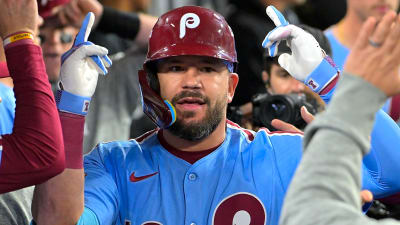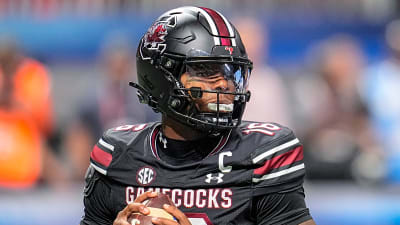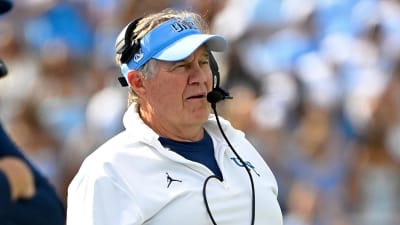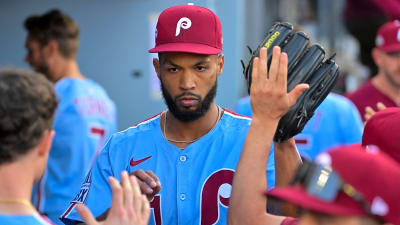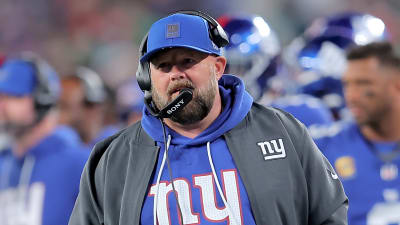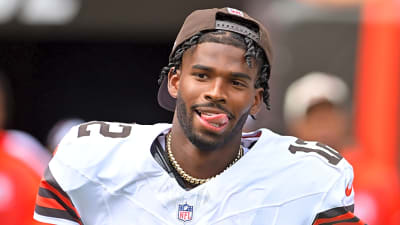
The National League East is already one of baseball’s most competitive divisions, packed with perennial contenders and star power at nearly every position. But as loaded as the present looks, the future may be even brighter. Each team boasts at least one elite young talent who could make a major impact in the near future — and 2026 might be the year many of them take center stage.
Here’s a look at the most exciting prospect in each NL East organization — players who could shape the division’s next era.
New York Mets: Carson Benge, OF
Few prospects in the National League saw their stock soar in 2025 quite like Carson Benge. In his age-22 season, the former two-way college player began the year at High-A Brooklyn and finished it in Triple-A Syracuse, rocketing through three levels after bursting onto the scene as one of the Mets’ most dynamic young talents.
Benge’s athleticism — once split between the mound and the batter’s box — now fully fuels a twitchy, left-handed swing geared for loft and impact. He posted a stellar 150 wRC+ across the three levels, pairing elite power metrics with advanced plate discipline that belied his relative inexperience as a full-time hitter.
Carson Benge has struggled at Triple-A since he hit the IL after getting hit in the hand with a pitch, but he's looked more like himself the last few games and took Andrew Painter deep here on a line tonight for his 14th homer of the year. pic.twitter.com/Oz3RBF3q1h
— Aram Leighton (@AramLeighton8) September 18, 2025
The grind of his first full season did show toward the end. At Triple-A, Benge became more aggressive, with his swing rate climbing to 47% (up from 39% in High-A and 45% in Double-A), and his walk rate dipped as a result. The production followed suit — he managed just a 53 wRC+ in 24 games. But underneath the surface, the data remained extremely encouraging: Benge produced a 52% hard-hit rate, reached a 110 mph max exit velocity, and maintained an excellent 88% in-zone contact rate despite the increased swing aggression.
Defensively, Benge continues to project as a long-term center fielder, with the speed and instincts to stay up the middle. That, combined with his blend of power, contact ability, and patience, gives the Mets a potential everyday contributor who could impact games in all facets. Benge is likely to open 2026 back in Triple-A barring a standout spring, but it’s increasingly likely he’ll force his way into the big-league lineup before the season is over.
Philadelphia Phillies: Aidan Miller, SS/3B
After being selected in the first round of the 2023 MLB Draft, Aidan Miller delivered the kind of breakout season in 2025 that solidified his status as one of baseball’s premier infield prospects. The 21-year-old showcased the full breadth of his offensive skill set at Double-A, posting a 134 wRC+ that reflected his potent combination of power and plate discipline. Miller’s ability to elevate the ball with authority to the pull side was a constant threat, and that impact bat earned him a late-season promotion to Triple-A.
In a brief but eye-opening eight-game sample at the highest level of the minors, Miller slashed .333/.514/.519 with a 184 wRC+, demonstrating not only loud contact but also advanced strike-zone command. Perhaps most encouragingly, he’s making more contact than many evaluators expected from a slugger of his profile — an indication that his offensive game is maturing faster than anticipated.
Could Aidan Miller become an everyday player for the Phillies next season?@AramLeighton8 and @Jack_McMullen11 discussed his huge second half on The Call Up⬇️ pic.twitter.com/aKDJZtY0xU
— The Call Up | An MLB Prospect Podcast (@The_CallUpPod) October 2, 2025
Miller also brings a surprising dimension of athleticism to his game. He swiped 59 bases in 116 games — including seven steals in eight Triple-A contests — flashing plus speed that adds another layer of value. Defensively, he’s taken significant strides at shortstop, showing improved footwork and instincts that suggest he can stick up the middle long term.
With a powerful right-handed bat, a patient approach, and the defensive versatility to handle either shortstop or third base, Miller could force his way into Philadelphia’s lineup as early as next season. His skill set — particularly his ability to impact the game on both sides of the ball — makes him a potential heir apparent to Alec Bohm and a foundational piece for the Phillies’ infield of the future.
Atlanta Braves: Owen Murphy, RHP
A former first-round pick in 2022, Owen Murphy has endured his share of setbacks over the past two seasons, but when healthy, he’s offered glimpses of why the Braves remain so high on his potential. Armed with a high-carry fastball released from a low slot, Murphy consistently generates life and ride at the top of the zone that allows the pitch to play above its raw velocity. He pairs it with two quality breaking balls — a biting slider and a depthy curveball — both of which tunnel effectively off his heater and give him a legitimate three-pitch mix to build around.
Unlike Carson Benge or Aidan Miller, Murphy is unlikely to reach Atlanta in 2026, but that doesn’t diminish the excitement surrounding his development. After returning from Tommy John surgery, he logged 27.1 innings at High-A and looked sharp, posting a 28.7% strikeout rate against a 5.9% walk rate. While he’s flashed even more swing-and-miss in the past, the ability to command the zone and limit free passes so soon after surgery is an encouraging sign.
Still just 22 years old, Murphy also has room to add strength, and with it, possibly more velocity — a development that could push his ceiling even higher. His combination of pitch traits, command potential, and athleticism give him a realistic chance to grow into a mid-rotation arm in a contending Braves rotation. His progress during his first full season removed from surgery will be one of the most compelling storylines in the system to watch in 2026.
Washington Nationals: Jarlin Susana, RHP
With former top pitching prospect Travis Sykora sidelined following UCL reconstruction, Jarlin Susana has quickly become the most intriguing arm to watch in the Nationals’ system heading into 2026. Signed out of the Dominican Republic in 2021 and acquired from the San Diego Padres as part of the Juan Soto trade, Susana has long tantalized evaluators with his raw stuff — and over the past year, he’s started to harness it in a way that suggests legitimate big-league impact down the road.
At his best, Susana overwhelms hitters with a fastball that regularly touches triple digits and a wipeout slider that flashes plus-plus potential. The fastball’s velocity and late life allow it to miss bats even in the strike zone, while the slider’s sharp two-plane break gives him a true swing-and-miss weapon against righties. He also shows feel for a developing changeup that could round out a traditional starter’s mix.
Command remains the biggest variable in Susana’s development, as bouts of wildness have occasionally limited his efficiency. Even so, the underlying metrics point to significant progress — his K-BB% sat at an impressive 22% last season despite the elevated walk rate, underscoring just how difficult he is to square up. Susana also generates his premium velocity with a low-effort delivery and has shown the ability to hold that velocity deep into starts, a crucial trait for a pitcher with his archetype as a potential two-pitch strikeout machine.
At just 21 years old, Susana is still one of the youngest pitchers at his level, and his combination of velocity, physicality, and swing-and-miss stuff gives him as much ceiling as any arm in the system. While 2026 might still be more about development than contribution at the big-league level, his progress will be one of Washington’s most important storylines. If he can refine his command and sequencing, the Nationals could have a future impact starter capable of anchoring their next contending rotation.
Miami Marlins: Robby Snelling, LHP
When the Marlins acquired Robby Snelling from San Diego as part of the Tanner Scott trade, they envisioned a polished, durable left-hander who could move quickly through the system and anchor the front of a rotation. In 2025, Snelling did nothing to dissuade that belief — instead, he looked every bit the part of a future big-league mainstay.
Across Double-A and Triple-A, Snelling was one of the most consistent and effective arms in Miami’s system, posting a 23.2% K-BB rate that speaks to both his ability to miss bats and his advanced command. His performance at Triple-A was particularly impressive: not only did he continue to limit free passes, but he also suppressed damage, allowing just a 27% hard-hit rate against more experienced hitters.
Snelling’s evolution as a pitcher took another step forward after he reintroduced his curveball into his arsenal, a development that transformed him into more of a groundball artist while maintaining his ability to generate swing-and-miss. His fastball sits comfortably in the low-to-mid 90s and plays up thanks to excellent command and deception, while his slider and changeup give him a versatile three-pitch foundation capable of attacking hitters on both sides of the plate.
What truly sets Snelling apart is his polish and maturity on the mound. He consistently works deep into games, sequences effectively, and shows poise beyond his years. That advanced feel, combined with his ability to limit hard contact and induce weak ground balls, gives him one of the highest floors of any pitching prospect in the division.
With his mix of command, contact management, and strikeout ability, Snelling is on track to make an impact in Miami as soon as 2026. He projects as a dependable mid-rotation starter with the potential for more, and his profile fits perfectly with the Marlins’ tradition of developing frontline pitching.
More must-reads:
- MLB playoff takeaways: Yoshinobu Yamamoto throws complete game to give Dodgers a 2-0 lead in the NLCS
- Suspended Guardians pitchers blocked from playing in winter league
- The 'MLB playoff debut strikeouts leaders' quiz
Breaking News
Trending News
Customize Your Newsletter
 +
+
Get the latest news and rumors, customized to your favorite sports and teams. Emailed daily. Always free!
